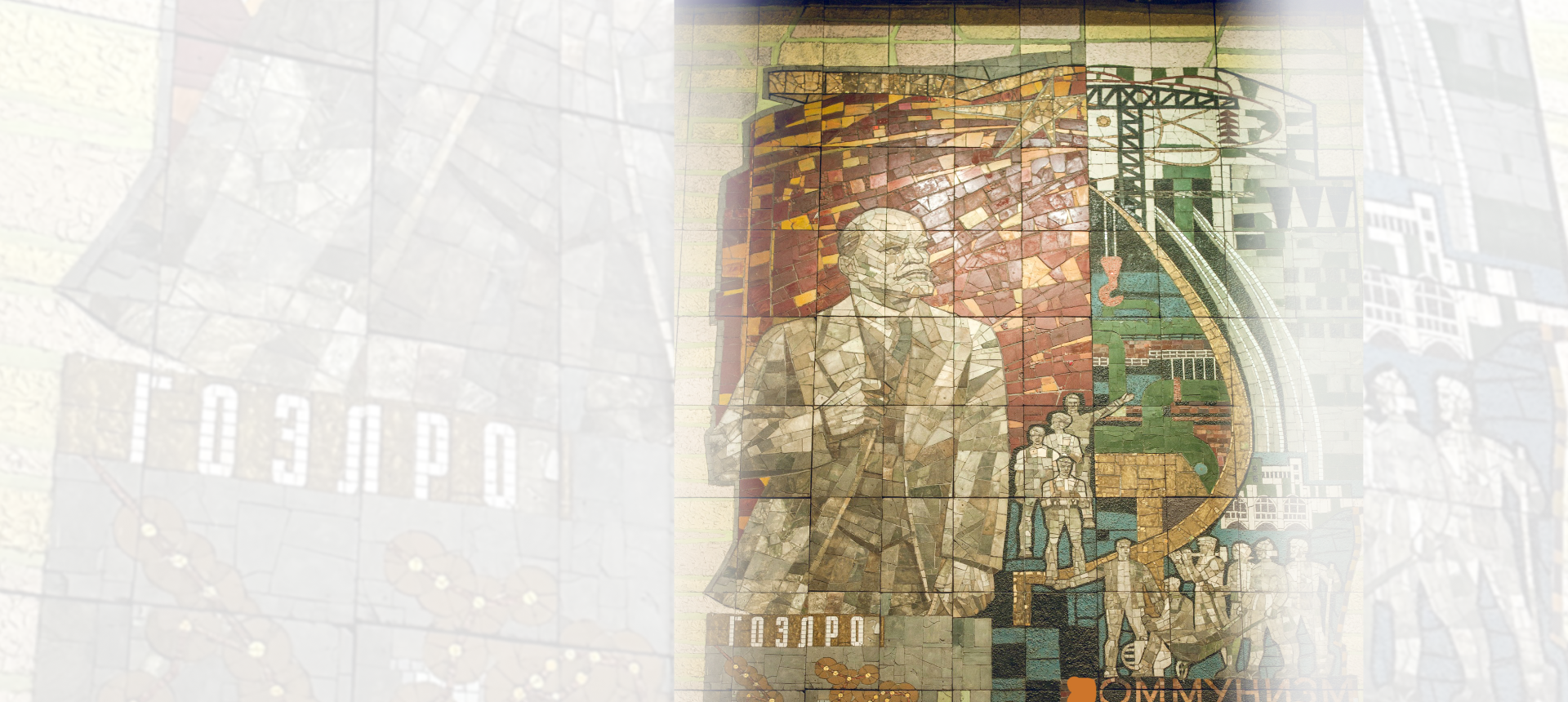Preserving the cultural heritage
In places where work has been humming for decades, real masterpieces reflecting the distant past can be easily found. At Konakovskaya GRES, as if in a museum, the entire wall is covered with the Soviet mosaic depicting the main symbols of that time: V.I. Lenin, workers, a large-scale production and electrification of the entire country.
The Soviet painting arose in the struggle against pre-revolutionary formalist trends – cubo-futurism and abstractionism. Addressing the new reality, the painting created the image of the hero of that time - a liberated man, a worker who made the revolution and creating a new society.
In 1925, the famous artist Vladimir Frolov created two mosaic coats of arms of the USSR on the facade of Kievsky railway station in Moscow. This work is considered the beginning of the history of the Soviet mosaics. But it gained the greatest popularity in 1954 only, when the head of the USSR government Nikita Sergeevich Khrushchev began to fight against the “architectural excesses,” including columns, porticos, stucco, etc. Surprisingly, mosaic art was not included in the “fight against excess” and it became the main tool against impersonality and greyness.
At the plants mosaic panels fulfilled not only a decorative function, but also they embodied the ideological and aesthetic values of the time and contributed to the creation of a special atmosphere in the industrial complexes. They could stimulate workers and engineers to work and achieve new goals, creating an inspiring atmosphere and reminding them of the significance of their work. Attention was paid as well to the production peculiarities - the mosaics were created taking into account the specifics of work in the workshop where they were located. These works not only embodied the artist's skill, but also contained ideological messages highlighting the importance of the Soviet industry.
The artists used a variety of techniques, including ceramic tiles in different shades to create colorful and detailed images. And they could be so large that they could be located on entire sections of buildings. Some of the mosaic panels have become cultural heritage and already have historical value. But many masterpieces have disappeared forever over time due to the changes in the industrial infrastructure and demolition of old buildings.
Next year Konakovskaya GRES will celebrate 60 years, but even after more than half a century, we were able to preserve this historical mosaic panel. Despite the changes that have taken place and are under way right now, we do not forget about the cultural heritage and do our best to preserve it.
